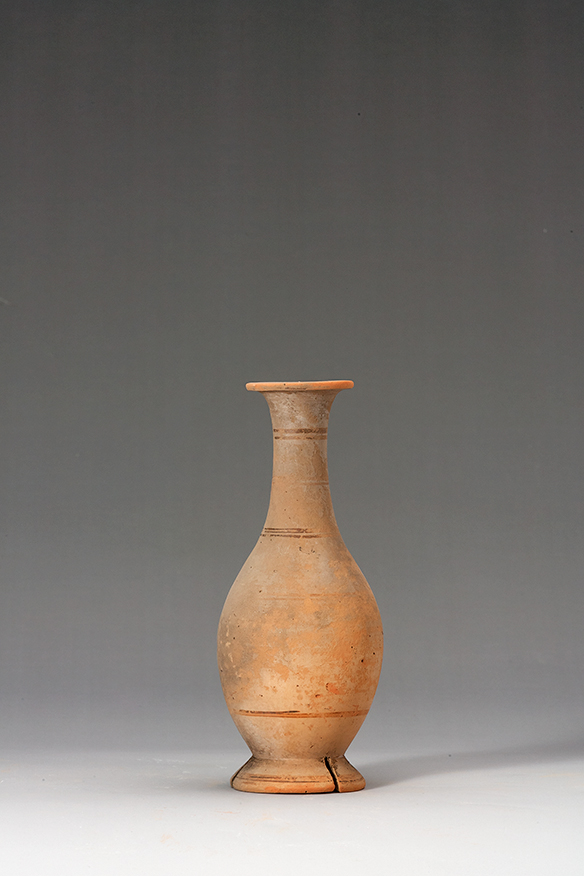Title: Unguentarium - 1966.33
Acquisition number: 1966.33
Author or editor: J.R. Green
Culture or period: Sicilian Black, Banded and Plain.
Date: Early 3rd century BC.
Material: Clay - Terracotta
Object type: Unguentarium
Dimensions: 68mm (w) × 166mm (h)
Origin region or location: Italy
Origin city: Possibly Gela.
Display case or on loan: 10
Keywords: Sicilian, Gela and Woite Collection
J.R. Green with B. Rawson, Catalogue of Antiquities in the Australian National University, A.N.U. (Canberra, 1981) 72.
1966.33
Unguentarium
From the Woite Collection; probably from the area of Gela, Sicily. Ht 16.6cm; diam. 6.8cm.
Intact. Orange-buff clay, grey in places from secondary firing. The foot has four vertical cuts. There are three groups of two lines in brown paint on the neck and single lines on the lip, lower wall and foot.
Although unguentaria are known from the fourth century, they became an increasingly popular item of grave furniture in the period following 300 BC when they steadily supplanted the lekythos. They were produced in large quantities in most parts of the Greek world, but it is nonetheless possible to discern an overall development from rounded forms to taller and more elongated. Our example, which should probably be dated relatively early in the series, perhaps to the earlier part of the third century BC, is unusual in several respects, not least its size and the treatment of the foot. It is probably from Sicily.
On the function of these vessels, see N. Massar, “Parfumer les morts. Usages et contenu des balsamaires hellénistiques en contexte funéraire”, in: A. Tsingarida (ed.), Shapes and Uses of Greek Vases (7th – 4th centuries B.C.). Proceedings of the Symposium Held at the Université libre de Bruxelles, 27-29 april 2006 (Brussels 2009) 307-318.
Compare the two from Malta, elsewhere in the Catalogue. For a good initial discussion, see L. Forti, “Gli unguentari del primo periodo ellenistico”, Rendiconti dell’Accademia di Archeologia, Lettere e Belle Arti di Napoli 37, 1963, 3-15; also P. Åström, “Two Unguentaria and an Obol”, Opuscula Atheniensia 7, 1967, 187-190, V.R. Anderson-Stojanovic, “The Chronology and Function of Ceramic Unguentaria”, American Journal of Archaeology 91, 1987, 105-122, and more recently A. Camilli, Ampullae. Balsamari ceramici di età ellenistica e romana (Rome 1999).
See 1966.01-1966.42 in this catalogue for all material from the Woite Collection in the ANU collection.
J.R. Green with B. Rawson, Catalogue of Antiquities in the Australian National University, A.N.U. (Canberra, 1981) 72.
